Red wine is an alcoholic beverage made from fermented dark-colored grapes. The color of red wine ranges from deep purple to a light ruby red, and it gets its color from the skin of the grapes used in the fermentation process.
The grapes are typically crushed, and then the juice, skins, and seeds are left to ferment together.
During fermentation, yeast consumes the sugars in the grapes and converts them into alcohol. The skins also impart tannins, which contribute to the wine’s structure, texture, and aging potential.
Red wines can vary widely in flavor and aroma depending on the type of grape, the region where the grapes are grown, and the winemaking process.
There are many different varieties of red grapes, each with its own unique characteristics. Some of the most popular red wine grape varieties include Cabernet Sauvignon, Merlot, Pinot Noir, Syrah (Shiraz), and Zinfandel, among others.
Red wine is enjoyed around the world and is often paired with a wide range of foods. It can be a complex and nuanced beverage, with flavors ranging from fruity and light to rich and full-bodied. Additionally, red wine is known for containing various compounds, such as resveratrol and antioxidants, which have been associated with potential health benefits when consumed in moderation.
| Wine Type | Calories (per 5 oz serving) | Calories (per 750 ml bottle) |
|---|---|---|
| Red Wine | 125 | 625 |
| White Wine | 121 | 605 |

What are the main differences between red wine and white wine?
Red wine is made from dark-colored grape varieties and includes the grape skins during fermentation, giving it its rich color and higher tannin content. White wine is typically made from green or yellow-colored grapes, and the skins are removed before fermentation, resulting in a lighter color and flavor profile.
| Red Wine | White Wine |
|---|---|
| Primary Grapes: Red or black grapes | Primary Grapes: Green or yellow grapes |
| Skin Contact: Fermented with grape skins | Skin Contact: Fermented without grape skins |
| Color Deep red, burgundy, purple, or ruby | Color Pale yellow, straw, or golden |
| Tannins: High tannin content | Tannins:Low tannin content |
| Flavor Profile: Rich, complex, often with berry, plum, or earthy notes | Flavor Profile: Light, crisp, often with citrus, floral, or apple notes |
| Room temperature (60-68°F / 15-20°C) | Chilled (45-55°F / 7-13°C) |
| Often aged for years, improves over time | Typically consumed young, less aging potential |
| Generally lower acidity | Higher acidity |
| Pairs well with red meats, rich sauces, and bold flavors | Pairs well with seafood, poultry, light salads, and creamy sauces |
| Alcohol Content: Often higher (12-15% ABV) | Alcohol Content: Often lower (10-13% ABV) |
Genetics and Lifestyle: Influence on Wine Consumption Benefits and Risks
Genetic Factors
Alcohol Metabolism Genes: Variations in genes like ADH1B and ALDH2 affect how individuals metabolize alcohol. For instance, people with a variant of the ALDH2 gene often experience adverse effects from alcohol consumption, leading to a higher risk of alcohol-related health problems.
Gene-Environment Interactions: Genetic predispositions can influence how beneficial or harmful wine consumption is. For example, individuals with a family history of alcoholism may be at higher risk of developing alcohol dependence, even with moderate consumption.
Cardiovascular Genes: Genetic variations can affect how the heart and blood vessels respond to the polyphenols and antioxidants in wine, potentially influencing the cardiovascular benefits.
Lifestyle Factors
- Diet: The health benefits of wine are often more pronounced when it is consumed as part of a balanced diet, such as the Mediterranean diet, which includes plenty of fruits, vegetables, whole grains, and healthy fats.
- Physical Activity: Regular physical activity can enhance the cardiovascular benefits of moderate wine consumption and help mitigate some of the risks associated with alcohol.
- Smoking: Smoking can negate the cardiovascular benefits of wine and increase the risk of cancer, outweighing any potential benefits from wine consumption.
- Overall Alcohol Consumption: The benefits of wine are linked to moderate consumption. Heavy drinking can lead to numerous health issues, including liver disease, high blood pressure, and an increased risk of certain cancers.
- Stress and Mental Health: Individuals with high stress levels or poor mental health may use alcohol as a coping mechanism, increasing the risk of dependence and negating any potential health benefits.
Gender and Age
- Gender Differences: Women generally have lower levels of alcohol dehydrogenase, the enzyme that metabolizes alcohol, which can lead to higher blood alcohol levels and a greater risk of alcohol-related harm. Guidelines typically recommend lower alcohol consumption for women.
- Age: Older adults may experience different effects from wine consumption due to changes in metabolism, medication interactions, and increased sensitivity to alcohol.
Health Status
- Preexisting Conditions: Individuals with certain health conditions, such as liver disease, pancreatitis, or a history of certain cancers, should avoid alcohol consumption.
- Medications: Some medications can interact negatively with alcohol, affecting its metabolism and increasing the risk of adverse effects.
Cultural and Social Factors
- Cultural Norms: Cultural attitudes towards alcohol can influence consumption patterns and perceptions of its health effects. In some cultures, moderate drinking is integrated into social and family activities, potentially leading to more balanced consumption.
- Social Support: A supportive social network can influence drinking habits. People who drink socially and responsibly with friends and family may experience more of the benefits and fewer risks.
Psychological Factors
- Mental Health: Individuals with mental health issues such as anxiety or depression may use alcohol as a form of self-medication, which can lead to dependence and other negative health outcomes.
- Alcohol Dependence Risk: Genetic predispositions combined with environmental factors can increase the risk of developing alcohol dependence, even with moderate drinking.
12 Types of grapes use in the production of Red wine
There are numerous grape varieties used in the production of red wine around the world. Each type of grape brings its unique flavors, aromas, and characteristics to the wine. Here are some of the most widely known red wine grape varieties:
- Cabernet Sauvignon: This is one of the most popular red wine grapes globally. It’s known for its deep color, rich tannins, and flavors of blackcurrant and sometimes green bell pepper.
TASTE
Dry
Full Body
Medium-high Tannins
Medium-high Acidity

2. Merlot: Merlot is known for its softer, fruitier character compared to Cabernet Sauvignon. It often exhibits flavors of plum, cherry, and herbal notes.
Taste of merlot full-bodied and acidic with a velvety tannin mouthfeel and fruity flavors.

3. Pinot Noir: Pinot Noir is known for its elegance and complexity. It tends to be lighter in color and body compared to Cabernet Sauvignon and Merlot, with flavors of red berries and earthy notes.

4.Syrah (or Shiraz): Syrah produces bold, full-bodied red wines with flavors of dark fruits like blackberry, as well as spicy and sometimes smoky notes.

5. Zinfandel: Zinfandel is primarily grown in California. It’s known for its bold, Jammy fruit flavors, often resembling blackberry and raspberry.

6.Malbec: Originally from France, Malbec is now widely grown in Argentina. It’s known for its deep color, robust tannins, and flavors of dark fruits like blackberry and plum

7. Sangiovese: The primary grape of Italy’s Chianti, Sangiovese is known for its high acidity and flavors of cherry, tobacco, and earth.

8. Nebbiolo: This is the grape behind the famous Italian wines Barolo and Barbaresco. Nebbiolo produces wines with high acidity, strong tannins, and flavors of red fruit, roses, and tar.
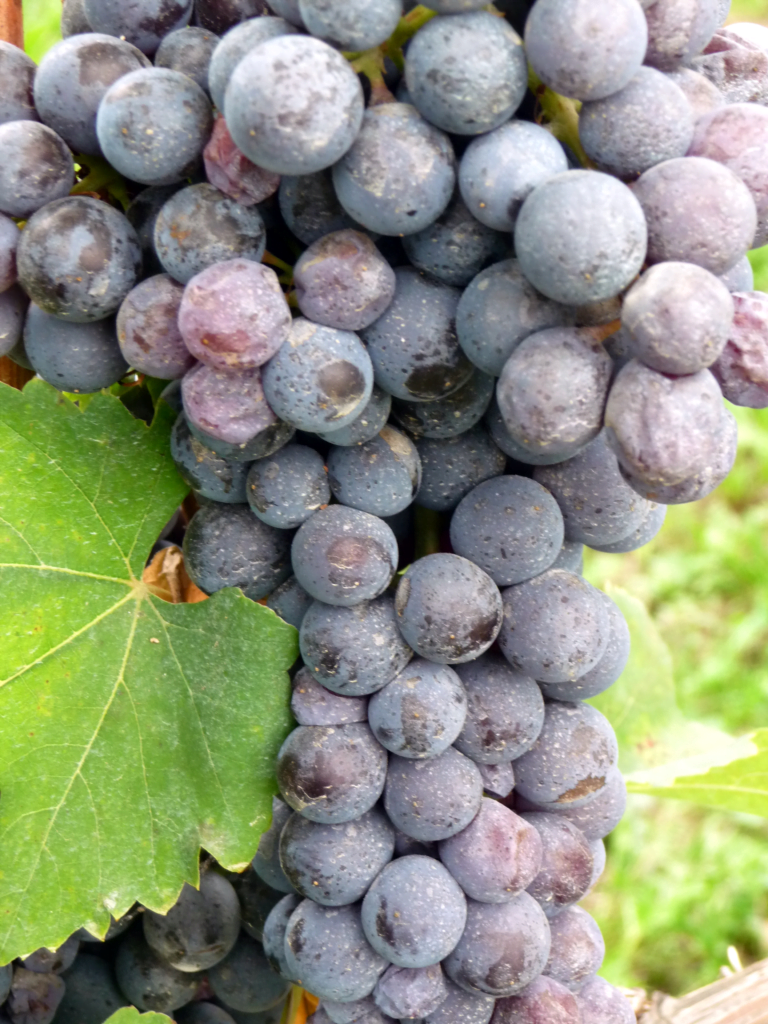
9.Grenache (Garnacha): Often used in blends, Grenache produces fruity and spicy wines with flavors of red berries and a characteristic warmth.
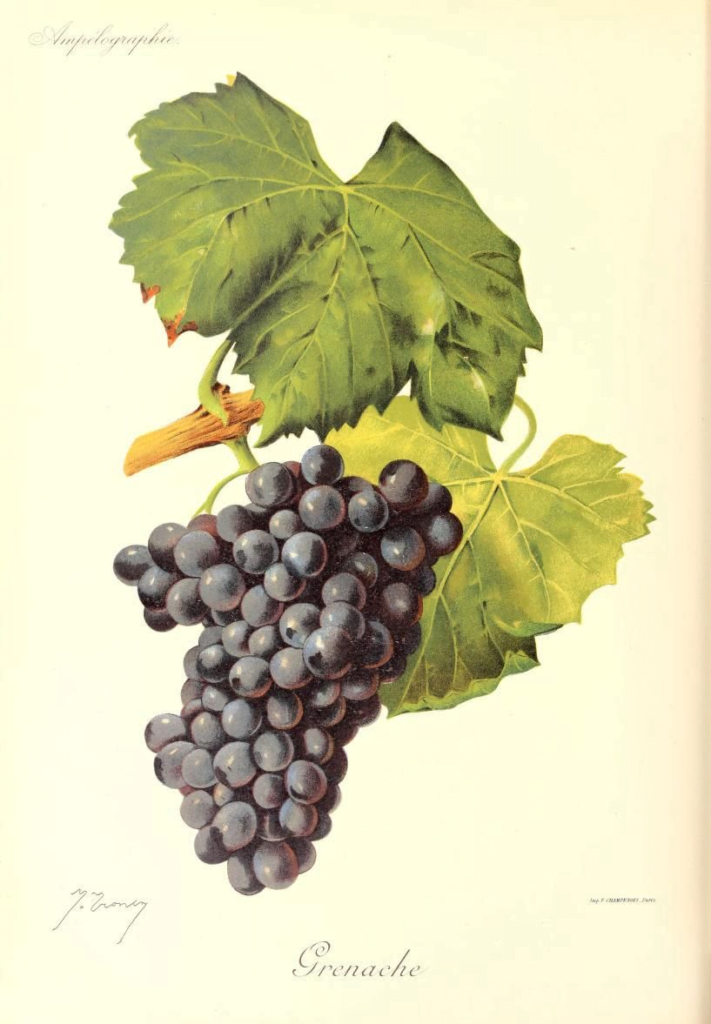
10.Tempranillo: The primary grape of Spain’s Rioja, Tempranillo offers flavors of red fruit, leather, and tobacco. It often has a good balance of acidity and tannins.
Taste of TEMPRANILLO
-Dry
-Medium-full Body
-Medium-high Tannins
-Medium-high Acidity
11. Cabernet Franc: This is one of the major grapes used in Bordeaux blends. It has herbal notes, often described as green bell pepper, along with red fruit flavors.
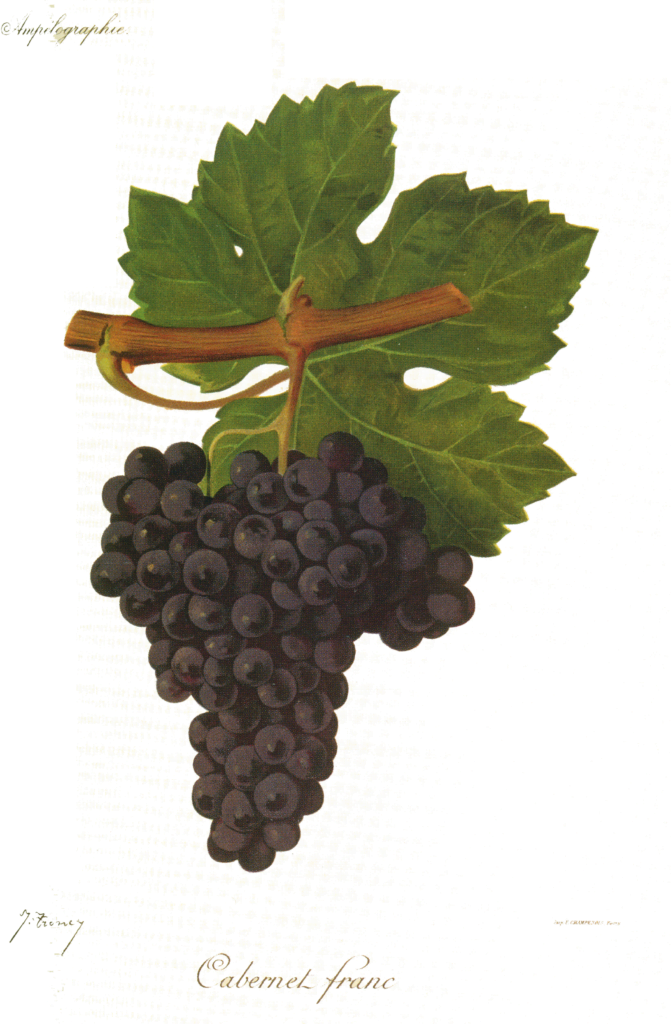
12. Petit Verdot: Another Bordeaux grape, Petit Verdot is used in small quantities to add color, tannin, and aromatic complexity to blends.
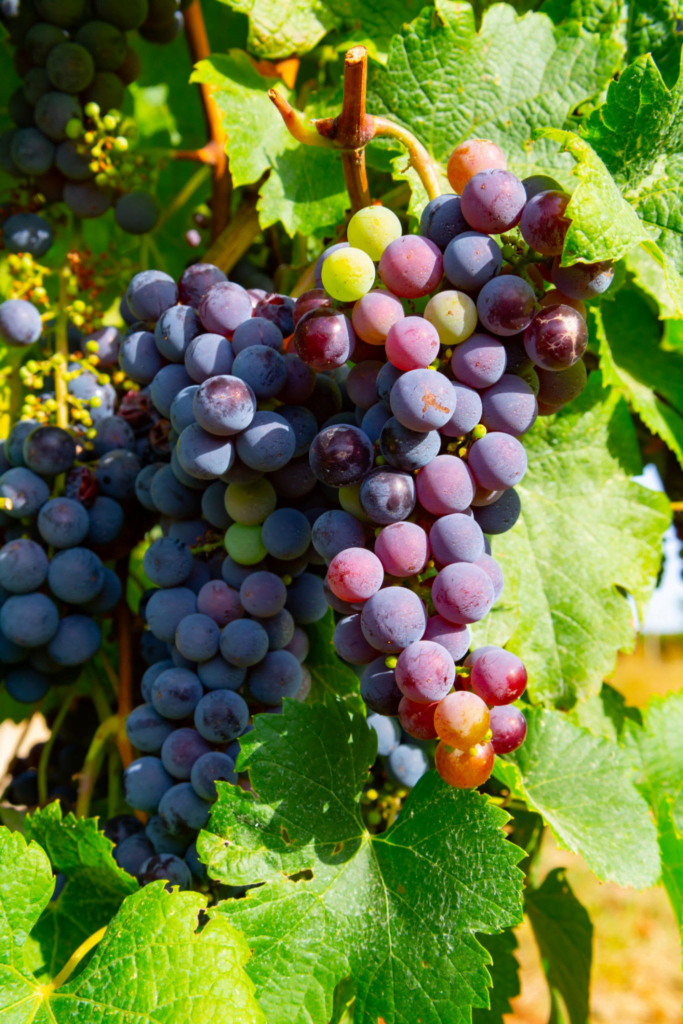
These are some of the most prominent red wine grape varieties, but there are many more regional and lesser-known varieties that contribute to the diverse world of red wine. Each grape brings its own unique characteristics to the wines it produces, influenced by factors like climate, soil, and winemaking techniques.
Tasting and serving Tips for Red Wine vs. White Wine
Red Wine:
- Temperature: Serve red wine slightly below room temperature, around 60-68°F (15-20°C), to enhance its flavors.
- Glassware: Use a larger, rounder glass to allow the wine to breathe and the aromas to develop.
- Aromas: Red wines often have rich, complex aromas like berries, cherries, spices, and earth. Swirl the wine in the glass to release these scents.
- Tasting: Take a small sip, letting the wine coat your mouth to experience its full body. Notice the tannins, which add dryness and texture. Pay attention to the balance between fruitiness, acidity, and tannins.
White Wine:
- Temperature: Serve white wine chilled, around 45-55°F (7-13°C), to highlight its crisp, refreshing qualities.
- Glassware: Use a smaller, narrower glass to preserve the wine’s delicate aromas.
- Aromas: White wines often have floral, citrus, or tropical fruit notes. Some whites may also have hints of vanilla or butter, especially if oaked.
- Tasting: Take a sip and note the acidity, which gives white wine its crispness. Focus on the balance between sweetness and acidity and how the flavors evolve on your palate.
Health Benefits of red wine
- Heart Health: Moderate consumption of red wine has been linked to a reduced risk of heart disease. Resveratrol and other antioxidants in red wine may help increase levels of high-density lipoprotein (HDL or “good” cholesterol) and protect against artery damage.
- Antioxidant Properties: Red wine is rich in antioxidants like flavonoids, quercetin, and resveratrol, which help combat oxidative stress and reduce inflammation in the body. These compounds may help protect cells from damage caused by free radicals.
- Improved Longevity: Some studies suggest that moderate red wine consumption may be associated with a longer lifespan. This could be attributed to the presence of resveratrol, which has been linked to anti-aging effects.
- Blood Sugar Regulation: Resveratrol has been shown to improve sensitivity to insulin, which may help regulate blood sugar levels. This can be particularly beneficial for individuals at risk of developing type 2 diabetes.
- Cognitive Function: Resveratrol may have neuroprotective effects and has been associated with improved cognitive function and a reduced risk of neurodegenerative diseases like Alzheimer’s and Parkinson’s.
- Cancer Prevention: Some studies suggest that the antioxidants in red wine, particularly resveratrol, may help inhibit the growth of cancer cells and reduce the risk of certain types of cancer, although more research is needed in this area.
- Bone Health: Some studies have suggested that moderate consumption of red wine may be associated with higher bone mineral density, which could contribute to improved bone health.
- Anti-Inflammatory Effects: The antioxidants in red wine may help reduce inflammation in the body, which is a common factor in many chronic diseases.
- Gut Health: Resveratrol may have a positive impact on gut microbiota, potentially contributing to better digestive health.
- Stress Reduction: Some studies have suggested that moderate consumption of red wine may be associated with reduced levels of stress and improved mental health.
It’s important to note that while these potential benefits are associated with moderate consumption of red wine, excessive alcohol consumption can have serious negative health effects, including addiction, liver damage, increased risk of certain cancers, and cardiovascular problems. It’s recommended that men limit their consumption to no more than two standard drinks per day, and women to one.
It’s always advisable to consult with a healthcare professional before making significant changes to your diet or alcohol consumption, especially if you have specific health concerns or conditions. Additionally, these potential benefits should not be used as a justification to start drinking if you currently abstain from alcohol.
Risks associated with alcohol consumption
Alcohol consumption can pose various health risks, especially when consumed in excess. Here are some key risks associated with alcohol consumption:
1. Short-Term Risks
- Accidents and Injuries: Alcohol impairs coordination and judgment, increasing the likelihood of accidents such as falls, drowning, and traffic accidents.
- Alcohol Poisoning: Consuming large amounts of alcohol in a short time can lead to alcohol poisoning, which can be life-threatening.
- Violence and Aggression: Alcohol can lower inhibitions and increase the risk of aggressive behavior, leading to violence or injuries.
- Risky Sexual Behavior: Alcohol impairs judgment, which can lead to unprotected sex, increasing the risk of sexually transmitted infections (STIs) and unintended pregnancies.
2. Long-Term Risks
- Liver Disease: Chronic alcohol consumption can lead to liver diseases, such as fatty liver, hepatitis, cirrhosis, and liver cancer.
- Cardiovascular Issues: While moderate alcohol consumption may have some cardiovascular benefits, excessive drinking can lead to high blood pressure, heart disease, and stroke.
- Mental Health Problems: Long-term alcohol use is associated with mental health issues like depression, anxiety, and an increased risk of suicide.
- Cancer: Alcohol consumption is linked to several types of cancer, including mouth, throat, esophagus, liver, breast, and colon cancer.
- Addiction: Regular alcohol use can lead to dependence and addiction (alcoholism), characterized by an inability to control drinking despite negative consequences.
- Neurological Damage: Chronic alcohol use can cause brain damage, leading to cognitive impairments, memory loss, and conditions like Wernicke-Korsakoff syndrome.
3. Social and Economic Consequences
- Work and Family Life: Alcohol abuse can negatively impact work performance, relationships, and family dynamics.
- Legal Issues: Excessive drinking can lead to legal problems, including DUI charges, domestic violence, and public intoxication.
- Economic Burden: The costs associated with alcohol-related healthcare, legal issues, and lost productivity can be substantial.
4. Impact on Pregnancy
- Fetal Alcohol Spectrum Disorders (FASDs): Drinking alcohol during pregnancy can cause developmental issues in the fetus, leading to FASDs, which include a range of physical, behavioral, and learning problems.
5. Social and Environmental Factors
- Peer Pressure and Cultural Norms: Social situations and cultural norms can influence drinking behaviors, sometimes encouraging excessive consumption.
- Alcohol Availability: Easy access to alcohol can contribute to increased consumption and associated risks.
It’s important to note that the risks of alcohol consumption can vary depending on factors such as the amount consumed, the individual’s health status, and genetic predispositions. Moderation and awareness of these risks are key to reducing the potential negative impacts of alcohol.
Common types of medications that can interact with wine
1. Antibiotics
- Metronidazole (Flagyl): Drinking wine with metronidazole can cause severe nausea, vomiting, cramps, flushing, and headaches. This reaction is similar to a disulfiram (Antabuse)-like reaction.
- Tinidazole (Tindamax): Similar to metronidazole, tinidazole can also cause severe reactions when combined with alcohol.
- Certain Cephalosporins (e.g., cefoperazone, cefotetan): These can also cause a disulfiram-like reaction when taken with alcohol.
2. Antidepressants
- MAO Inhibitors (e.g., phenelzine, tranylcypromine): Mixing wine with MAO inhibitors can lead to dangerously high blood pressure, as well as other severe reactions.
- Tricyclic Antidepressants (e.g., amitriptyline, nortriptyline): Combining these with wine can increase the sedative effects and risk of dizziness, drowsiness, and impaired coordination.
- SSRIs (e.g., fluoxetine, sertraline): While less risky than MAOIs, combining SSRIs with wine can still enhance the sedative effects and impair judgment.
3. Sedatives and Sleeping Pills
- Benzodiazepines (e.g., diazepam, lorazepam): Wine can enhance the sedative effects of benzodiazepines, leading to extreme drowsiness, impaired motor skills, and potentially dangerous respiratory depression.
- Z-Drugs (e.g., zolpidem, eszopiclone): These medications for insomnia can have their sedative effects amplified by wine, increasing the risk of accidents, extreme drowsiness, and even sleepwalking or other complex behaviors.
4. Opioids
- Pain Relievers (e.g., oxycodone, hydrocodone, morphine): Combining wine with opioids can dramatically increase the risk of respiratory depression, overdose, and death due to the compounded depressant effects on the central nervous system.
5. Blood Thinners
- Warfarin (Coumadin): Wine can increase the effects of warfarin, leading to an elevated risk of bleeding. Conversely, the alcohol in wine can also interfere with the liver’s metabolism of warfarin, making it less effective.
- Direct Oral Anticoagulants (e.g., rivaroxaban, apixaban): Alcohol can increase the risk of gastrointestinal bleeding when taken with these medications.
6. Antihypertensives (Blood Pressure Medications)
- ACE Inhibitors (e.g., lisinopril, enalapril): Wine can lower blood pressure further, leading to dizziness or fainting.
- Beta-Blockers (e.g., propranolol, metoprolol): Combining wine with beta-blockers can enhance the blood pressure-lowering effect, potentially causing dizziness or fainting.
7. Diabetic Medications
- Insulin: Drinking wine can cause unpredictable effects on blood sugar levels, including hypoglycemia (low blood sugar), especially if consumed without food.
- Metformin: Wine can increase the risk of lactic acidosis, a rare but serious condition.
8. Cholesterol-Lowering Medications
- Statins (e.g., atorvastatin, simvastatin): While moderate wine consumption might not have severe interactions, excessive alcohol intake can increase the risk of liver damage, a known risk of statins.
9. Antifungal Medications
- Ketoconazole: Wine can increase the concentration of ketoconazole in the blood, raising the risk of side effects like liver damage.
10. Seizure Medications (Anticonvulsants)
- Phenytoin (Dilantin): Wine can alter the blood levels of phenytoin, potentially leading to reduced seizure control or increased side effects.
- Valproic Acid (Depakote): Alcohol can increase the sedative effects and raise the risk of liver damage.
11. ADHD Medications
- Stimulants (e.g., methylphenidate, amphetamine salts): Combining these with wine can counteract the medication’s effectiveness and increase the risk of cardiovascular side effects like increased heart rate and blood pressure.
12. Anti-Anxiety Medications
- Buspirone (Buspar): Drinking wine with buspirone can enhance its sedative effects, leading to dizziness, drowsiness, and impaired coordination.
13. Pain Relievers
- Nonsteroidal Anti-Inflammatory Drugs (NSAIDs) (e.g., ibuprofen, naproxen): Wine can increase the risk of gastrointestinal bleeding when taken with NSAIDs.
- Acetaminophen (Tylenol): Combining wine with acetaminophen can increase the risk of liver damage, especially with heavy or chronic alcohol use.
Cooking with red wine
When it comes to cooking with red wine, it’s generally recommended to use a wine that you would also enjoy drinking. The flavor of the wine will be imparted into your dish, so choosing a wine you like will result in a more pleasing outcome.
Here are some popular red wines commonly used for cooking:
- Cabernet Sauvignon: This is a robust red wine with rich flavors of black currant, blackberry, and sometimes a hint of green bell pepper. It works well in hearty dishes like stews and red meat sauces.
- Merlot: Merlot is a medium-bodied wine with flavors of plum, cherry, and sometimes a touch of herbal notes. It’s versatile and can be used in a wide range of dishes, including pasta sauces, stews, and marinades.
- Pinot Noir: This is a lighter red wine with flavors of cherry, strawberry, and earthy notes. It pairs well with lighter dishes like poultry, pork, and salmon.
- Zinfandel: Zinfandel is known for its bold and fruity flavors, often with hints of blackberry and spice. It’s great for dishes with spicy or tangy elements, like barbecue sauces or chili.
- Syrah/Shiraz: Syrah (also known as Shiraz in some regions) is a full-bodied wine with flavors of blackberry, black pepper, and sometimes smoky notes. It’s excellent for rich, hearty dishes like braised meats and stews.
- Chianti: Chianti is an Italian red wine known for its bright acidity and flavors of cherry and earth. It’s commonly used in Italian cuisine, particularly in tomato-based sauces.
Remember, it’s important not to use a wine that you wouldn’t enjoy drinking, as the flavors will concentrate during cooking. Also, avoid using “cooking wine” from the supermarket, as these often have a high salt content and can introduce unwanted flavors to your dish.
Lastly, if you don’t have wine on hand or prefer not to use it, there are non-alcoholic substitutes like grape juice, cranberry juice, or even a combination of vinegar and broth that can be used in recipes calling for red wine. Keep in mind that these substitutes will impart different flavors to your dish, so adjust accordingly to your taste.

Top Wine Pairing Tips: Red Wine vs. White Wine for Every Meal
When it comes to pairing red wine vs. white wine with food, there are some general guidelines that can help you make a great choice. Here’s a breakdown of how each type of wine complements different dishes:
Red Wine Pairing
- Bold Flavors and Rich Dishes: Red wines, especially those that are full-bodied like Cabernet Sauvignon or Syrah, pair well with hearty and rich dishes such as steaks, lamb, and game meats. The tannins in red wine help to cut through the fat and enhance the flavors of the meat.
- Tomato-Based Sauces: Red wines like Chianti or Merlot are great with dishes that have a tomato-based sauce, such as pasta with marinara sauce or pizza. The acidity in the wine complements the acidity of the tomatoes.
- Cheese: Aged cheeses, especially those that are hard and sharp like Parmesan or Gouda, pair beautifully with red wines. The robust flavors of the cheese can stand up to the intensity of the red wine.
- Spicy Dishes: If you enjoy dishes with a bit of spice, like barbecue or spicy Mexican food, try a red wine like Zinfandel, which has a bit of sweetness to balance out the heat.
White Wine Pairing
- Lighter Dishes: White wines are generally lighter and more refreshing, making them ideal for pairing with lighter dishes such as salads, chicken, and fish. For example, a Sauvignon Blanc pairs well with a crisp green salad or grilled chicken.
- Seafood: White wines like Chardonnay or Riesling are excellent choices for seafood dishes, especially those with a creamy sauce. The acidity in the wine balances the richness of the dish.
- Cheese: Soft cheeses like Brie or Camembert go well with white wines like Chardonnay. The creaminess of the cheese complements the smoothness of the wine.
- Spicy Dishes: For spicy Asian cuisine, a slightly sweet white wine like Riesling or Gewürztraminer can be a good match, as the sweetness helps to tame the spice.
General Tips
- Match Intensity: Try to match the intensity of the wine with the intensity of the food. Light wines with light dishes, and bold wines with bold dishes.
- Consider the Sauce: Often, the sauce in a dish can guide your wine pairing. A rich, creamy sauce might be better with a white wine, while a robust tomato or meat sauce would pair better with red wine.
White wine what is it made from?
White wine is a type of wine that is made primarily from white grapes. Unlike red wine, which is made from dark-colored grapes, white wine is produced from grapes that are green or yellowish in color. The juice of these grapes is typically separated from the skins and seeds early in the winemaking process, which helps to maintain the wine’s light color.
White wine can vary widely in flavor, aroma, and texture depending on factors such as the type of grape used, the region in which it is grown, and the winemaking techniques employed. Common white grape varieties include Chardonnay, Sauvignon Blanc, Riesling, and Pinot Grigio, among others.
White wine can range from crisp and acidic to rich and full-bodied, and it can be dry or sweet. It pairs well with a wide variety of foods, making it a versatile choice for pairing with different cuisines.
Grape varieties that are commonly used to make white wine.
- Chardonnay: Chardonnay is one of the most widely planted white grape varieties in the world. It is known for its versatility and is used to produce a wide range of white wines, from rich and buttery to light and crisp.

Chardonnay Grapes
- Sauvignon Blanc: Sauvignon Blanc is known for its bright acidity and distinctive aromas, which can include notes of green bell pepper, gooseberry, and citrus.

Sauvignon Blanc
- Riesling: Riesling is a highly aromatic grape variety known for its floral and fruity characteristics. It can produce a wide range of styles, from bone-dry to sweet dessert wines.

Riesling grapes
- Pinot Grigio/Pinot Gris: This grape variety is known for its light and crisp wines. The name differs depending on the region; Pinot Grigio is the Italian name and Pinot Gris is the French name.

Pinot Grigio/Pinot Gris
- Viognier: Viognier is known for its intense floral and stone fruit aromas. It is often used to produce aromatic and full-bodied white wines.

- Gewürztraminer: This grape variety is known for its highly aromatic and spicy profile, with notes of lychee, rose, and ginger. Gewürztraminer is a variety with a pink to red skin color, which makes it a “white wine grape” as opposed to the blue to black-skinned

- Chenin Blanc: Chenin Blanc is a versatile grape that can produce a wide range of wine styles, from dry to sweet. It is known for its high acidity and fruity flavors.

- Verdejo: Verdejo is a Spanish grape variety known for producing fresh and aromatic white wines, often with notes of citrus and green herbs.

Verdejo spanish grapes
- Albariño: Albariño is a white grape variety primarily grown in Spain and Portugal. It produces crisp, aromatic wines with notes of citrus and stone fruit.

- Moscato/Muscat: Muscat grapes, known for their floral and fruity aromas, are used to produce a range of sweet and sparkling white wines.

Moscato/Muscat grapes
- Sémillon: Sémillon is known for its full body and high acidity. It is often used in blends, but can also produce single varietal wines.

Semillon grapes
- Garganega: Garganega is an Italian grape variety used to produce Soave wines, known for their crisp and refreshing character.
These are just some of the most commonly used white grape varieties. There are many more unique and lesser-known varieties used in specific regions around the world.

Flavors of White Wine
White wine can have a wide range of flavors and aromas, depending on various factors including the grape variety, where it’s grown, and how it’s produced. Here are some common taste characteristics you might find in white wine:
- Citrus: Many white wines, particularly those made from grapes like Sauvignon Blanc or Chardonnay, can have citrusy notes. This might include flavors like lemon, lime, or grapefruit.
- Stone Fruit: This category includes flavors like peach, apricot, and nectarine. These can be found in wines made from grapes like Chardonnay and Viognier.
- Tropical Fruit: Some white wines, especially those from warmer climates, may have tropical fruit notes like pineapple, mango, or passion fruit. Grapes like Chardonnay and Sauvignon Blanc can exhibit these characteristics.
- Apple and Pear: These are common flavors in many white wines, especially those made from grapes like Chardonnay and Pinot Grigio.
- Floral: Some white wines, like Gewürztraminer, Riesling, and Muscat, can have floral aromas and flavors. This might include notes of jasmine, rose, or honeysuckle.
- Mineral: This is a term often used to describe a non-fruity, stony quality in white wines. It can sometimes be likened to the taste of wet stones or crushed rocks. It’s more common in certain styles of Chardonnay and some Rieslings.
- Herbaceous or Green: This is often associated with Sauvignon Blanc and can include flavors like green bell pepper, grass, or herbs.
- Oak: If a white wine is aged in oak barrels, it can pick up flavors like vanilla, butter, and sometimes even a toasty or smoky quality.
- Honeyed or Sweet: Some white wines, particularly those with residual sugar, can have a honeyed or sweet taste. This is common in late-harvest or dessert wines.
- Acidity: This isn’t a flavor per se, but it’s a crucial component of white wine taste. Wines with high acidity can taste crisp and refreshing, while those with lower acidity might feel rounder and softer.
Remember, individual wines can vary widely, and what you taste can be influenced by the specific grape, the winemaking process, and your own palate. It’s also worth noting that wine tasting is a subjective experience, so what one person tastes might differ from what another person perceives.
Health Benefits of white wine
- Antioxidant Properties: White wine contains antioxidants like quercetin and resveratrol, which can help neutralize harmful free radicals in the body, reducing oxidative stress and inflammation.
- Heart Health: Some studies suggest that moderate consumption of white wine may be associated with a reduced risk of heart disease. The antioxidants in white wine can contribute to improved cardiovascular health by increasing levels of high-density lipoprotein (HDL or “good” cholesterol) and helping to maintain healthy blood vessel function.
- Bone Health: Moderate consumption of white wine has been linked to higher bone mineral density in some studies. This may contribute to better bone health and a reduced risk of conditions like osteoporosis.
- Improved Lung Function: Some research suggests that moderate white wine consumption may be associated with better lung function, particularly in individuals with asthma. The antioxidants in white wine may help protect lung tissues.
- Digestive Health: Certain compounds in white wine, such as probiotics from the fermentation process, may contribute to a healthy gut microbiome and improved digestion.
- Longevity: Some studies have indicated that moderate consumption of white wine may be associated with a longer lifespan. This could be attributed to the presence of antioxidants like resveratrol.
- Cognitive Function: While much of the research has focused on red wine, some studies suggest that the antioxidants in white wine may also have neuroprotective effects, potentially contributing to improved cognitive function.
- Stress Reduction: Like red wine, moderate consumption of white wine has been associated with reduced levels of stress and improved mental health in some studies.
It’s important to note that while moderate consumption of white wine may offer these potential benefits, excessive alcohol consumption can lead to negative health effects, including addiction, liver damage, increased risk of certain cancers, and cardiovascular problems. The recommended limits for alcohol consumption are generally the same for both white and red wine.
As with any dietary choices, it’s advisable to consult with a healthcare professional, especially if you have specific health concerns or conditions. Additionally, these potential benefits should not be used as a reason to start drinking if you currently abstain from alcohol.

Cooking with white wine
Cooking with white wine can add depth, flavor, and acidity to a variety of dishes. Here are some tips and ideas for using white wine in your cooking:
- Choosing the Right White Wine:
- Use dry white wines like Chardonnay, Sauvignon Blanc, Pinot Grigio, or dry Riesling. Avoid sweet or dessert wines for most savory dishes.
- Deglazing:
- After sautéing meat or vegetables, pour a bit of white wine into the pan to deglaze it. This helps to lift any flavorful bits stuck to the bottom.
- Marinating:
- White wine can be used as a base for marinades. It helps tenderize meat and infuses it with flavor. Add herbs, garlic, and other seasonings to the wine for a well-rounded marinade.
- Poaching:
- Poaching fish or chicken in white wine imparts a delicate flavor. Add aromatics like herbs, garlic, and lemon to enhance the taste.
- Making Sauces:
- White wine is a key ingredient in many classic sauces like Beurre Blanc, Alfredo, and Lemon Butter. It adds acidity and depth of flavor.
- Creamy Dishes:
- Use white wine in creamy pasta sauces or soups. It can balance the richness of the cream and add complexity to the dish.
- Seafood Dishes:
- White wine pairs exceptionally well with seafood. It complements the natural flavors and enhances the overall taste.
- Risotto:
- Add white wine to the rice when making risotto. It helps to deglaze the pan and adds a subtle flavor to the dish.
- Steaming and Braising:
- When cooking mussels or clams, a mixture of white wine and broth creates a flavorful steam. It can also be used as a braising liquid for meats.
- Dressings and Vinaigrettes:
- Combine white wine with olive oil, herbs, mustard, and vinegar to create a flavorful dressing for salads or marinades.
- Reducing:
- Simmering white wine until it reduces can concentrate its flavors, making it a great addition to gravies or pan sauces.
- Desserts:
- White wine can be used in desserts like poached pears or in fruit-based sauces.
- Cooking Risks:
- Be cautious with heavily oaked or very high-alcohol white wines as they can sometimes impart strong or undesirable flavors to the dish.
Remember to choose a white wine that you would enjoy drinking, as the flavors will concentrate during cooking. Additionally, if you don’t consume alcohol, you can often substitute white wine with chicken or vegetable broth in recipes. The flavor profile will be slightly different, but it can still be delicious.
Who should Not drink wine Due to Its Alcohol content
While moderate wine consumption may offer certain health benefits, such as antioxidants from red wine, it’s not appropriate or safe for everyone. The following groups of individuals should avoid drinking wine and other alcoholic beverages
- Pregnant and Breastfeeding Women
- Risk to the Fetus: Drinking alcohol during pregnancy can lead to Fetal Alcohol Spectrum Disorders (FASDs), which encompass a range of physical, behavioral, and learning problems in children.
- Breastfeeding Concerns: Alcohol can pass into breast milk, potentially affecting the baby’s development and sleep patterns.
Individual Under Legal Drinking age
- Individuals Under the Legal Drinking Age
- Developmental Risks: Alcohol consumption can interfere with brain development in adolescents and young adults.
- Legal Implications: Underage drinking is illegal and can lead to legal consequences.In the US legal drinking age is 21yrs.
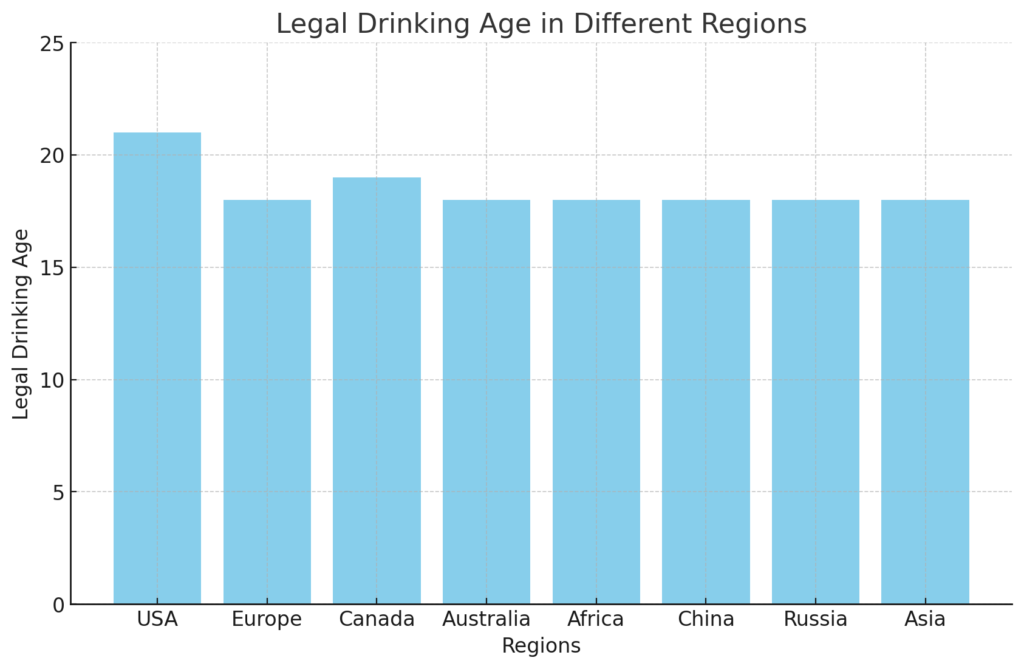
People with a History of Alcohol Use Disorder (AUD)
- Risk of Relapse: Even small amounts of alcohol can trigger cravings and lead to a relapse in individuals recovering from alcohol dependence.
Individuals with Certain Medical Conditions
- Liver Disease: Conditions like hepatitis, cirrhosis, or fatty liver disease can be exacerbated by alcohol consumption.
- Pancreatitis: Alcohol can inflame the pancreas, worsening this condition.
- Heart Conditions: Certain heart diseases, such as cardiomyopathy or arrhythmias, can be aggravated by alcohol.
- Mental Health Disorders: Conditions like depression, anxiety, and bipolar disorder can be worsened by alcohol.
Those Taking Specific Medications
- Drug Interactions: Alcohol can interact negatively with various medications, including but not limited to:
- Antibiotics: Like metronidazole and tinidazole.
- Antidepressants: Such as MAO inhibitors.
- Pain Relievers: Including opioids and acetaminophen.
- Sedatives and Sleeping Pills: Like benzodiazepines.
- It’s essential to consult a healthcare provider or pharmacist about alcohol interactions with any prescribed or over-the-counter medications.
Individuals Planning to Drive or Operate Machinery
- Impaired Abilities: Even small amounts of alcohol can impair coordination, reaction times, and judgment, increasing the risk of accidents.
People with a Family History of Alcoholism
- Genetic Predisposition: A family history can increase the risk of developing alcohol dependence.
Individuals with Gastrointestinal Issues
- Acid Reflux and Ulcers: Alcohol can exacerbate conditions like GERD (gastroesophageal reflux disease) and stomach ulcers.
Those with Allergies or Sensitivities
- Sulfite Sensitivity: Some wines contain sulfites, which can cause allergic reactions in sensitive individuals.
- Histamine Intolerance: Wines, especially red wines, contain histamines that can lead to symptoms like headaches, flushing, or nasal congestion in some people.
People Trying to Conceive
- Fertility Concerns: Alcohol can affect fertility in both men and women.
Individuals Managing Weight or Blood Sugar
- Caloric Content: Wine contains calories that can contribute to weight gain.
- Blood Sugar Levels: Alcohol can affect blood sugar levels, which is a concern for individuals with diabetes.
It’s crucial for individuals to assess their personal health situations and consult with healthcare professionals to determine whether consuming wine or any alcoholic beverage is safe for them. Making informed decisions can help mitigate potential health risks associated with alcohol consumption.
Common question people ask about red and white wine with answers
Which is healthier: red wine or white wine?
- Answer: Red wine is often considered healthier due to its higher concentration of antioxidants like resveratrol, which are believed to benefit heart health. However, both red and white wines contain beneficial compounds, and the overall health impact depends on moderation and individual health considerations.
Does red wine have more calories than white wine?
- Answer: Red wine generally has slightly more calories than white wine, primarily due to its higher alcohol content and sometimes sugar content. However, the difference is usually minimal, with a typical glass of red wine containing about 125-130 calories, compared to 120-125 calories in white wine.
Which wine pairs better with certain foods: red or white?
- Answer: Pairing often depends on the type of food. Red wine typically pairs well with heavier, richer foods like red meats and aged cheeses due to its bold flavors and tannins. White wine is often paired with lighter dishes like fish, chicken, and salads, as its acidity and lighter body complement these foods.
Is red wine always dry, and white wine always sweet?
- Answer: No, both red and white wines can range from dry to sweet. Dryness in wine refers to the lack of residual sugar. There are many dry white wines (like Sauvignon Blanc or Chardonnay) and sweet red wines (like Lambrusco or certain dessert wines). The perception of sweetness also varies based on the wine’s acidity, alcohol, and tannin levels.
Why do some people prefer red wine over white wine, or vice versa?
- Answer: Preferences often come down to personal taste. Red wine is typically richer and more complex, appealing to those who enjoy bold flavors. White wine tends to be lighter and more refreshing, which some people prefer, especially in warmer weather or with lighter meals.
Which wine ages better: red or white?
- Answer: Red wines generally age better due to their higher tannin content, which acts as a preservative. However, certain white wines, like some Chardonnays or Rieslings, can also age well, developing more complex flavors over time. Most white wines are meant to be consumed young.
Is it true that red wine has more sulfites than white wine?
- Answer: Actually, white wine often has more added sulfites than red wine. Sulfites are used as a preservative to prevent oxidation and spoilage. However, the levels in both red and white wines are generally safe for most people, though some individuals may be sensitive to them.
Why do some people get headaches from red wine but not white wine?
- Answer: Some people may be sensitive to compounds found in red wine, such as tannins, histamines, or certain phenolics, which can contribute to headaches. The higher levels of these compounds in red wine, compared to white wine, are often blamed for “red wine headaches.”
Can white wine be as beneficial as red wine for heart health?
- Answer: While red wine is typically highlighted for its heart health benefits due to resveratrol, white wine also contains antioxidants like flavonoids, which can benefit heart health. The overall health benefits of wine depend on various factors, including the amount consumed and individual health conditions.









